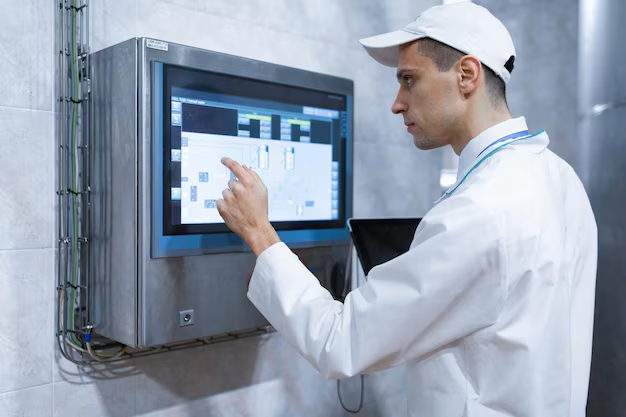Is Your Refrigerator Running Warm? Here’s How to Fix It!
Finding your refrigerator isn’t cooling properly can be frustrating, especially when it jeopardizes the freshness of your food. A warm refrigerator not only spoils groceries but can also pose health risks. Understanding the reasons behind this common household malfunction and knowing how to address them can save you both money and time. This guide will dive into why your refrigerator might be warm and offer actionable steps to remedy the issue.
🥶 Common Causes of a Warm Refrigerator
Before diving into solutions, it's essential to grasp the possible reasons your refrigerator might not be cooling as it should.
🦠 Blocked Air Vents
A typical culprit of a warm fridge is blocked air vents. Air must circulate freely between the refrigerator and freezer compartments for optimal cooling.
- Tip: Make sure you’re not overpacking your fridge as this can block the vents and lead to uneven cooling.
🥶 Dirty Condenser Coils
Condensers play a critical role in keeping the fridge cool. When these get dirty, efficiency drops, and the refrigerator might warm up.
- Tip: Clean the coils regularly, which are typically located at the back or bottom of the appliance.
⚡ Faulty Thermostat Sensor
Sometimes, the thermostat might malfunction, causing the fridge to warm up. A malfunctioning sensor makes it difficult for the appliance to maintain the correct temperature.
- Tip: Check if your thermostat is set correctly or needs replacement.
❄️ Evaporator Fan Issues
The evaporator fan distributes cold air throughout the appliance. If it breaks down, cooling efficiency can plummet.
- Tip: Listen for unusual noises, which could indicate a fan malfunction.
🔧 Step-by-Step Guide to Fix a Warm Refrigerator
If you’ve identified a potential issue, it's time to roll up your sleeves and start troubleshooting.
1. Inspect the Thermostat Settings
Start with the simplest check—inspecting the thermostat settings to ensure they are at the desired levels. Ideally, the refrigerator should be set between 37°F and 40°F for optimal performance.
- Adjustments: If the dial is accidentally nudged, simply reset it to the recommended setting.
2. Examine the Door Seals
Your refrigerator door seals (or gaskets) need to be intact for the door to close properly, maintaining the interior temperature.
- Test: Try the paper test—close the door on a piece of paper. If you can pull it out easily, the seal might need replacing.
3. Clean the Condenser Coils
Turn off the power and remove the kick plate, then gently vacuum or brush the dirt off the condenser coils. Performing this cleaning every six months ensures your fridge runs efficiently.
- Safety Tip: Always ensure the appliance is switched off and unplugged before cleaning.
4. Check the Evaporator Fan
A faulty evaporator fan suspends air circulation, causing compartment temperatures to rise.
- Check: Open the refrigerator door. If the fan doesn’t start running when you activate the door switch, it may need replacement.
5. Unclog the Defrost Drain
Sometimes, blockages in the defrost drain can cause issues. Water backing up can lead to temperature problems.
- Solution: Clean the drain with a mixture of baking soda and hot water to flush out debris.
6. Test the Temperature Control Thermostat
The thermostat can become defective over time. Listen for a consistent clicking sound when adjusting the thermostat knob from low to high – if not, consider a replacement.
🌡️ Temperature & Settings: Getting Them Right
Understanding the ideal settings for your refrigerator is key to maintaining its functionality.
📏 Ideal Temperature Settings
- Refrigerator: The recommended setting is between 37°F and 40°F.
- Freezer: Keep it at 0°F for efficient operation.
🌬️ Keep the Airflow Balanced
Ensure both the refrigerator and freezer compartments are not overfilled, allowing air to circulate and maintain a consistent temperature.
📉 Regular Maintenance
Set reminders for regular maintenance checks. Basic upkeep like cleaning coils, inspecting seals, and testing fans can prevent more serious issues.
🛠️ Frequently Encountered Symptoms and Solutions
📉 Inconsistent Cooling
If some areas are cold while others are warm, check for blocked vents and replace or adjust shelves to promote better air circulation.
🍎 Spoiled Food
Spoiled food is often a result of improper temperature settings or faulty door seals. Conduct the simple tests above to address these areas.
🔊 Loud Noises
Strange sounds may signify issues with components like fans or motors, which could be contributing to cooling problems. It’s best to consult a professional for these.
📝 Quick Reference Summary
For quick guidance, here's a visual summary of what to check and potential solutions to your warm refrigerator woes:
| Symptom | Possible Cause | Solution |
|---|---|---|
| Warm Compartment | Blocked air vents | Rearrange food to clear pathways |
| Loud Noises | Faulty evaporator fan | Inspect and possibly replace the fan |
| Spoiling Food | Incorrect temperature setting | Reset thermostat and replace door seals if necessary |
| Inconsistent Cooling | Dirty condenser coils | Clean coils regularly |
🌟 Final Thoughts
Facing a warm refrigerator can be daunting, but with these insights and tools, you’re well-prepared to tackle the issue. Regular checks and maintenance can dramatically improve your appliance's lifespan and efficiency, saving you the hassle of repairs or early replacements. Remember, while DIY fixes can solve a lot of problems, don’t hesitate to seek professional assistance when necessary to keep your refrigerator running smoothly.
Hopefully, this guide lights the way to keeping your food fresh and your cooler cool! 🥶
